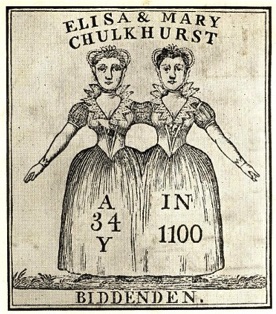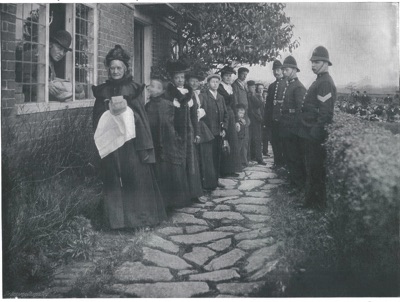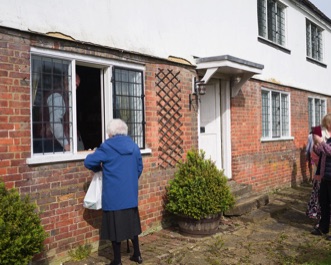The Maids of Biddenden is inspired by the real-life story of conjoined twins Mary and Eliza Chulkhurst, born in 1100 into a wealthy family from a small Kent village.
Joined at the hip, the sisters overcome fear and hostility to grow into gifted and much-loved women – one a talented musician and song-writer, the other a caring healer and grower of medicinal plants. Entangled in the struggles for power and influence of the great Kent nobles of the time, they achieve much in their lifetimes and leave behind a legacy in Biddenden that survives to this day.
Eliza and Mary Chulkhurst were real-life 12th-century conjoined twins born to a wealthy family from the village of Biddenden in Kent. The two women lived to be 34 and left their land to charity when they died. An annual dole from the proceeds of their estate is still paid out to the poor and elderly every Easter, and they are commemorated on the sign seen when entering the village. Little is known about Eliza and Mary Chulkhurst, so I have taken the real-life historical events and characters of the time and used them to create a (hopefully) credible, entertaining and inspirational story about their life.



Broadsheet photo (property of the Wellcome Collection, London)
Receiving the dole in 1906 (photograph by Sir Benjamin Stone)
Receiving the dole in 2022 (photograph by the author)
It is difficult to imagine what it would be like to live a life as a conjoined twin, so I have researched fiction, non-fiction and medical books on the subject to understand what the physical and psychological implications are of being joined to another person.
I visited Biddenden on Easter Monday to see the eligible villagers collect the annual 'Bread and Cheese Dole' at the Old Workhouse in the town. The dole was originally funded from the rent of lands donated by Eliza and Mary and these lands were sold for housing in 1907 allowing the dole to expand considerably. The Biddenden Consolidated Charity, registered charity 209504, administers the pay-outs today.